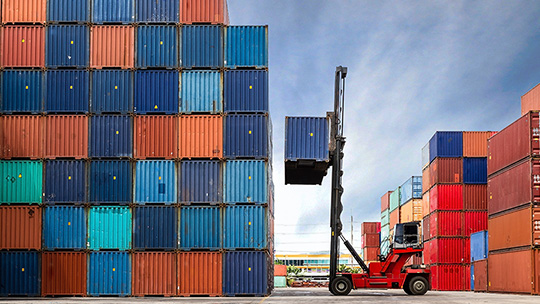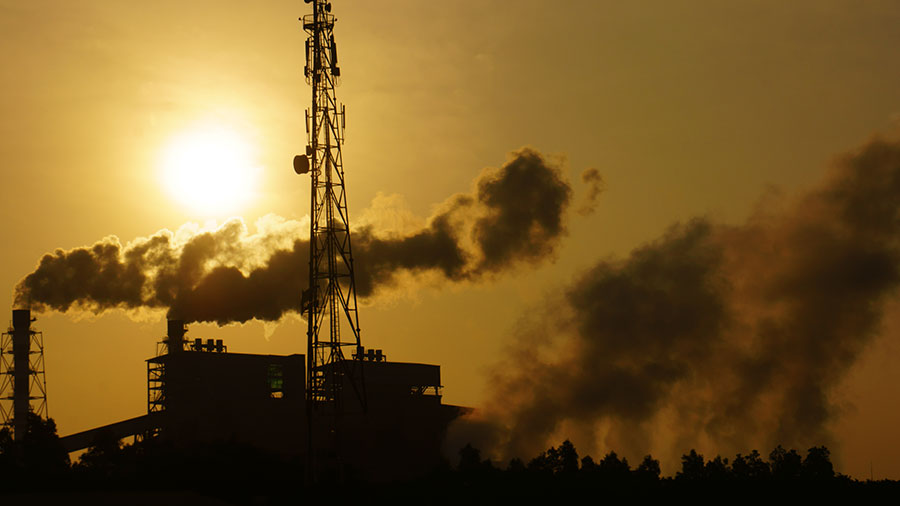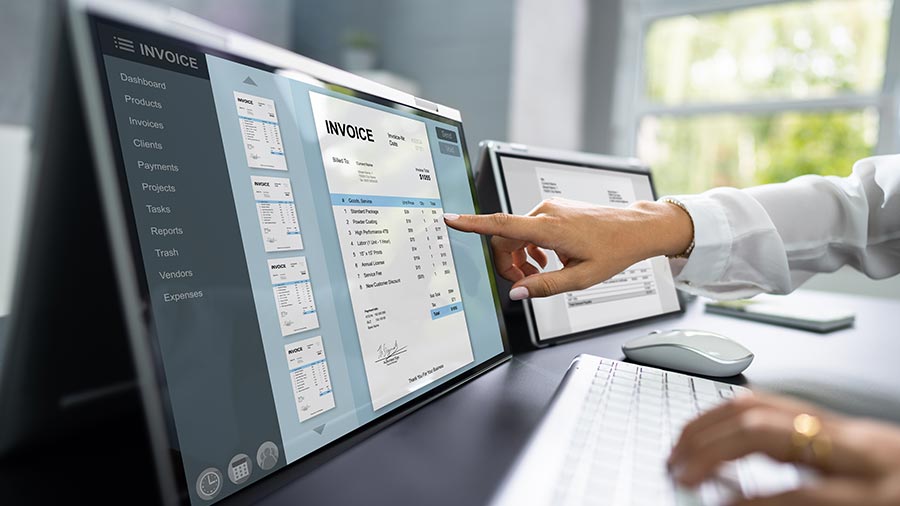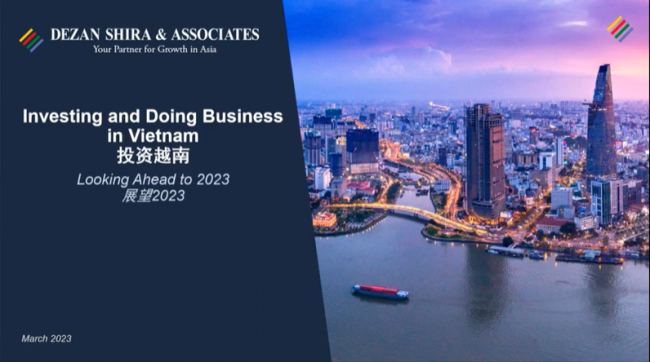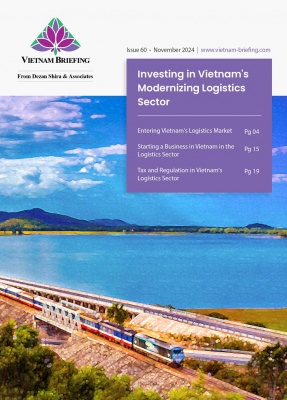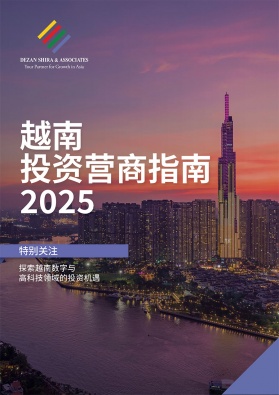Vietnam-Denmark Relations: Trade, Investment, and Business Opportunities
In recent years, Vietnam and Denmark have forged stronger diplomatic ties, marked by growing collaboration across multiple sectors. Mutual interests in areas such as renewable energy, sustainability, and climate action have fueled these improved relations. The two nations have found common ground in their shared commitment to tackling global environmental challenges, laying the foundation for a Green Strategic Partnership that promises to accelerate progress in these fields.
This partnership opens up excellent opportunities for Danish investors looking to tap into Vietnam’s expanding market, especially in sectors such as green technology, renewable energy, and sustainable development. As Vietnam continues to modernize its economy, the potential for Danish businesses to contribute to and benefit from this transformation has never been greater.
In this article, we look at the current state of Vietnam-Denmark diplomatic, trade, and investment relations and discuss some of the Vietnamese industries with considerable potential for Danish investors.
Vietnam-Denmark diplomatic relations
Denmark and Vietnam have enjoyed a dynamic and evolving diplomatic relationship since the establishment of their formal ties in 1971, marked by deepening cooperation in political, economic, cultural, and environmental sectors. A significant milestone was reached in 2000 when Vietnam opened its embassy in Denmark, paving the way for more frequent high-level exchanges. Over the following years, numerous official visits took place from both sides, including prime ministers, ministers, royal family members, and parliamentary delegations. These exchanges were pivotal in fostering bilateral trust and broadening the scope of collaboration.
A major leap in the partnership occurred in 2011, when the Crown Prince of Denmark visited Vietnam on the occasion of the 40th anniversary of diplomatic relations. This visit resulted in the signing of a Strategic Partnership focused on climate change, green growth, energy, and environmental cooperation, laying the groundwork for a more comprehensive framework. The subsequent signing of the Comprehensive Partnership Agreement (CPA) in 2013 further institutionalized the relationship, promoting long-term cooperation in areas such as education, health, food safety, and sustainable development.
Bilateral trade and economic relations intensified throughout the 2010s, with high-level meetings and business forums encouraging Danish companies to explore Vietnam’s growing market. Initiatives like the Danish Growth Council for Vietnam and sector-focused collaborations in education, agriculture, and green technology illustrated the breadth of engagement. Denmark’s expertise in sustainability, clean energy, and governance resonated with Vietnam’s development priorities, particularly as the Southeast Asian nation sought to modernize its economy and transition toward more sustainable growth.
In a historic development, on November 1st, 2023, Vietnam and Denmark officially launched a Green Strategic Partnership (GSP). This initiative formalized and expanded their cooperation in climate action and green economic growth. The GSP emphasizes political dialogue, investment in renewable energy, sustainable trade, and joint efforts to meet climate goals under the Paris Agreement and the UN Sustainable Development Goals. With this, the bilateral relationship has entered a new phase, centered on global challenges and shared opportunities in the green transition, reinforcing Denmark and Vietnam’s commitment to a sustainable future.
Vietnam-Denmark bilateral trade
According to the Danish Foreign Ministry, Vietnam was Denmark’s 50th largest trading partner in 2023, with total trade reaching DKK 10 billion (US$1.5 billion), accounting for 0.3 percent of Denmark’s overall trade. Data from ITC Trade Map, which is based on UN Comtrade statistics, shows that two-way trade between Denmark and Vietnam in 2024 amounted to US$799.9 million (note that this figure does not indicate a decline in trade, rather, it may reflect discrepancies in reporting methodologies).
Over the past decade, the trade relationship between Denmark and Vietnam has experienced significant changes, largely driven by Vietnam’s growth as an export-driven manufacturing hub and influenced by external factors like the COVID-19 pandemic and global trade tensions.
In the mid-2010s, Denmark briefly had a trade surplus with Vietnam, but this trend reversed as Vietnam’s manufacturing sector, especially in electronics, textiles, and footwear, grew rapidly. This shift resulted in an increasing trade deficit for Denmark as imports from Vietnam outpaced exports. By 2024, the trade deficit had reached US$358.9 million, reflecting Vietnam’s expanding export-driven economy.
The COVID-19 pandemic disrupted trade flows in 2020 and 2021, with global supply chain challenges and economic slowdown affecting both countries. However, as economies began to recover, two-way trade saw a rebound, reaching a record US$869.9 million in 2022, according to UN Comtrade data.
Since then, trade has shown some signs of slowing down in the subsequent years. Several factors could have contributed to this dip, including global economic uncertainty, inflation, and ongoing supply chain disruptions. Nevertheless, there are encouraging signs in early 2025. According to the Danish Foreign Ministry, Danish exports to Vietnam reached DKK 184.9 million (US$27.74 million) in January 2025, a 27.4 percent increase compared to the same period in 2024, while imports from Vietnam also rose sharply by 49.2 percent, totaling DKK 387.6 million (US$58.14 million).
While these figures suggest positive growth at the start of 2025, the sustainability of this momentum remains uncertain. External factors, such as the ongoing trade tensions between the U.S. and other global economies, including Vietnam and the EU, may impact global trade flows. While these tensions could potentially limit trade with certain markets, they might also drive Vietnam to explore new avenues for growth, particularly within the EU, which could provide opportunities for stronger trade ties between Vietnam and Denmark.
Danish exports to Vietnam
In 2023, Vietnam ranked as Denmark’s 51st largest export market, with total export revenues reaching DKK 4 billion (US$600 million), or 0.2 percent of Denmark’s total export revenue. Breaking down the trade by goods and services:
- Vietnam was Denmark’s 55th largest export market for goods, with exports valued at DKK 2 billion (US$300 million), accounting for 0.2 percent of Denmark’s total goods exports.
- For services, Vietnam was Denmark’s 39th largest export market, reaching DKK 3 billion (US$450 million), which represents 0.3 percent of Denmark’s total service exports.
ITC Trade Map data shows that Denmark’s total exports to Vietnam in 2024 were valued at US$220.5 million.
In 2024, the largest export commodity group to Vietnam was medical and pharmaceutical products, valued at DKK 337.5 million (US$50.63 million), according to the Danish Foreign Ministry. However, ITC Trade Map ranks nuclear reactors, boilers, machinery, and mechanical appliances as the top exports to Vietnam, valued at US$56.6 million.
|
Denmark’s Top Exports to Vietnam, 2024 |
|
|
Product |
Value (US$) |
|
Nuclear reactors, boilers, machinery and mechanical appliances; parts thereof; of which: |
53,643,000 |
|
14,340,000 |
|
7,256,000 |
|
5,109,000 |
|
Optical, photographic, cinematographic, measuring, checking, precision, medical or surgical instruments and apparatus; of which: |
35,832,000 |
|
22,852,000
|
|
5,819,000 |
|
Fish and crustaceans, molluscs and other aquatic invertebrates; of which: |
20,631,000 |
|
9,908,000 |
|
6,553,000 |
|
Electrical machinery and equipment and parts thereof; sound recorders and reproducers, television image and sound recorders and reproducers; of which: |
15,675,000 |
|
3,355,000 |
|
1,913,000 |
|
Albuminoidal substances; modified starches; glues; enzymes |
8,933,000 |
|
Pharmaceutical products |
7,044,000 |
|
Live animals |
6,212,000 |
|
Source: ITC Trade Map. Reporting country: Denmark |
|
Danish imports from Vietnam
Vietnam was Denmark’s 45th largest source of imports in 2023, with total import expenditure reaching DKK 5 billion (US$750 million), accounting for approximately 0.3 percent of Denmark’s total imports.
Breaking down imports by goods and services:
- Vietnam ranked as Denmark’s 37th largest source of goods imports, with imports valued at DKK 3 billion (US$450 million), representing 0.3 percent of Denmark’s total goods imports.
- For services, Vietnam was Denmark’s 69th largest source of service imports, with an import value of DKK 2 billion (US$300 million), also accounting for 0.3 percent of total service imports.
According to the ITC Trade Map, Denmark imported US$579.4 million worth of goods from Vietnam in 2024.
The largest import commodity group in 2024 was clothing and accessories, which totaled DKK 554 million (US$83.1 million), as reported by the Danish Foreign Ministry. Per the ITC Trade Map, the largest import commodity in 2024 was electrical machinery and equipment and parts thereof, valued at US$92.7 million.
|
Denmark’s Top Imports from Vietnam, 2024 |
|
|
Product |
Value (US$) |
|
Electrical machinery and equipment and parts thereof; sound recorders and reproducers, television image and sound recorders and reproducers; of which: |
92,748,000 |
|
34,915,000
|
|
32,691,000 |
|
Furniture; bedding, mattresses, mattress supports, cushions and similar stuffed furnishings; luminaires and lighting fittings; etc.; of which: |
65,416,000 |
|
42,962,000 |
|
18,827,000 |
|
Articles of apparel and clothing accessories, not knitted or crocheted; of which: |
64,884,000
|
|
17,648,000 |
|
12,975,000 |
|
11,123,000 |
|
Nuclear reactors, boilers, machinery, and mechanical appliances; parts thereof |
40,192,000 |
|
Ships, boats, and floating structures |
37,402,000 |
|
Footwear, gaiters, and the like; parts of such articles |
35,092,000 |
|
Plastics and articles thereof |
30,234,000 |
|
Source: ITC Trade Map. Reporting country: Denmark |
|
Vietnam-Denmark bilateral investment
While Denmark does not publish data on direct investments in Vietnam, according to the Danish Ministry of Foreign Affairs, over 135 Danish companies were operating in Vietnam as of 2023. Moreover, that year, 74 Danish subsidiaries were employing a total of 18,903 people in the country.
Renewables and sustainability
The cooperation between Denmark and Vietnam in the realm of sustainability has evolved into a dynamic and mutually beneficial relationship with a central focus on renewable energy and green development. Denmark, known globally for its leadership in wind energy and sustainable solutions, has emerged as a key partner in Vietnam’s efforts to transition toward a low-carbon economy. This collaboration is fueled not only by Denmark’s technical expertise and green innovation but also by Vietnam’s immense potential in renewable energy, especially offshore wind, thanks to its long coastline and favorable climatic conditions.
This partnership was further solidified in November 2023 with the establishment of a Green Strategic Partnership (GSP) between the two nations, following a joint declaration by Vietnamese Prime Minister Pham Minh Chinh and Danish Prime Minister Mette Frederiksen. The GSP marks a new chapter in bilateral relations, anchoring cooperation in areas ranging from climate change mitigation and renewable energy development to sustainable investment and green finance. It supports both countries’ shared commitment to the goals outlined in the Paris Agreement and the UN Sustainable Development Goals, particularly Vietnam’s aim for net-zero greenhouse gas emissions by 2050 and Denmark’s target of climate neutrality by 2045.
Vietnam’s rapidly growing economy, coupled with its increasing energy demand and vulnerability to climate change, underscores the urgency of its green transition. Danish companies are already playing a prominent role in this effort. With over 135 Danish firms operating in Vietnam, Denmark ranks among the largest European investors in the country, according to the Danish Ministry of Foreign Affairs. Key Danish players in offshore wind, such as Copenhagen Infrastructure Partners (CIP) and Ørsted, have shown strong interest in developing large-scale renewable projects in Vietnam, though they face regulatory and market-entry challenges that both sides are working to address.
The Vietnamese government has actively encouraged this investment. During a visit to Denmark in late 2024, Deputy Prime Minister Tran Hong Ha called on Danish firms to increase their presence in Vietnam’s green sectors, specifically in technology transfer, infrastructure development, and financing for renewable energy. At the same time, Denmark has expressed a willingness to assist Vietnam in building the necessary regulatory and technical frameworks for offshore wind development, a relatively new sector in the country.
Beyond energy, Danish investment is also contributing to sustainable manufacturing in Vietnam. A notable example is Lego’s new $1.3 billion carbon-neutral factory in Binh Duong province. Designed to be the company’s most sustainable production site globally, the facility features solar power generation, reduced packaging waste, and zero landfill operations. According to Lego Group’s senior vice president for Asia Operations, the project reflects the company’s deep-rooted commitment to sustainable development in Vietnam.
As the legal and policy environment in Vietnam continues to mature, Danish firms are likely to play an increasingly prominent role in shaping the country’s green future. Their involvement spans not just energy generation, but also capacity building, technology exchange, and the creation of high-quality green jobs. The long-standing and expanding cooperation between Denmark and Vietnam sets an important example of how developed and developing countries can partner effectively to achieve sustainable growth and confront the global climate crisis together.
Shipping
Vietnam’s maritime sector is undergoing rapid transformation as the country positions itself as a major hub for international trade and sea-based logistics. With a 3,200-kilometer-long coastline and strategic proximity to key global shipping routes, Vietnam has made the development of its sea economy a national priority. The government has laid out an ambitious vision for modernizing its seaports, expanding logistics infrastructure, and embracing green and digital technologies in line with global trends. These priorities align well with the strengths and ambitions of Danish shipping and maritime companies.
At the forefront of this engagement is Danish conglomerate A.P. Møller – Maersk, whose long-standing presence in Vietnam is now entering a new phase of strategic expansion. In recent high-level meetings with the Vietnamese government, Maersk expressed strong interest in contributing to the development of deep-water container ports, smart logistics infrastructure, and green maritime transport across Vietnam. The company is exploring investments in major ports such as Cai Mep, Lach Huyen, and Lien Chieu — projects that are central to Vietnam’s goal of becoming a regional maritime hub.
Vietnamese leaders have explicitly welcomed Maersk’s commitment to sustainable port infrastructure, including energy supply systems powered by hydrogen and ammonia, as well as digital port management technologies. This collaboration complements Vietnam’s broader push for green transition and digital transformation in its logistics and infrastructure sectors.
Danish companies are also responding to Vietnam’s growing shipbuilding ambitions. Already a supplier of small and medium-sized commercial vessels, Vietnam is seeking to upgrade its shipyards to produce more advanced and environmentally friendly ships. There is strong demand for maritime equipment and technology that can improve productivity, quality, and energy efficiency in shipbuilding — areas where Danish firms have specialized expertise.
Vietnam’s growing importance as a manufacturing base south of China is driving increased foreign investment in port capacity and maritime infrastructure, further boosting demand for international collaboration. With over $2 billion in Danish capital already invested across 169 projects in Vietnam, shipping and logistics are poised to become a key pillar of Danish-Vietnamese economic cooperation in the coming years.
Pharmaceuticals
Vietnam’s pharmaceutical industry is becoming an increasingly attractive destination for foreign investment, driven by rising healthcare demand, a growing middle class, and government support for medical innovation and infrastructure. With a population of over 100 million and a fast-aging demographic, Vietnam is facing a sharp rise in non-communicable diseases such as diabetes, cardiovascular illness, and obesity. These trends are pushing the country to modernize its healthcare system and improve access to quality treatment — creating significant opportunities for international pharmaceutical companies.
One of the most prominent recent moves in the sector comes from Danish healthcare giant Novo Nordisk, which marked a milestone in 2024 by becoming a fully licensed Foreign Invested Enterprise (FIE) in Vietnam. The company completed its first direct shipment of medicines as an independent importer, signaling a new phase in its long-standing commitment to Vietnam. This new legal status enables Novo Nordisk to streamline operations, scale up local hiring, and expand access to its products. The company has also been deeply involved in strategic partnerships with Vietnam’s Ministry of Health, the Danish Embassy, and key local health associations to improve care delivery, build medical capacity, and shape national health policy.
European companies as a whole are showing heightened interest in Vietnam’s pharmaceutical landscape. Several firms from France, the UK, and elsewhere have recently expanded their footprint in the country, citing its favorable business environment and strategic location as a gateway to Southeast Asia. This broader European momentum highlights Vietnam’s emergence as not just a promising healthcare market, but also a regional hub for pharmaceutical production and distribution.
Vietnam-Denmark trade, tax, and investment agreements
The bilateral relationship between Vietnam and Denmark is underpinned by a robust legal framework designed to facilitate trade, protect investments, and prevent double taxation. These agreements collectively support a stable and predictable environment for Danish companies operating in Vietnam and vice versa.
European Union-Vietnam Free Trade Agreement
Denmark, as a member of the European Union, is party to the European Union-Vietnam Free Trade Agreement (EVFTA), which entered into force on August 1, 2020. The agreement represents a milestone in EU-Vietnam economic relations, offering one of the most comprehensive trade frameworks between the EU and a developing country.
The EVFTA eliminates 99 percent of tariffs over a transitional period—65 percent of EU exports to Vietnam became tariff-free upon entry into force, with the remaining tariffs being phased out over 10 years.
In return, 71 percent of Vietnamese exports to the EU now enjoy zero tariffs, with full liberalization to follow gradually. The agreement also addresses non-tariff barriers through the harmonization of regulations, technical standards, and conformity assessments, making it significantly easier for EU companies to access the Vietnamese market.
Additionally, the EVFTA provides enhanced access to Vietnam’s service sectors—including financial services, telecommunications, environmental services, and transport—which are gradually being opened to EU providers. It strengthens the protection of intellectual property rights, including for European geographical indications (GIs), and contains binding commitments on sustainable development, labor rights, and environmental protection.
In the four years since its implementation, the EVFTA has had a transformative effect on trade. According to the Vietnamese Ministry of Industry and Trade (MoIT), Vietnam’s export value to the EU surged by nearly 50 percent, while EU imports to Vietnam increased by over 40 percent. This has helped position Vietnam as the leading ASEAN exporter to the EU.
Moreover, the EVFTA has stimulated high-quality investment flows. The European Chamber of Commerce in Vietnam (EuroCham) has noted that the agreement is a key factor in making the EU one of Vietnam’s largest sources of foreign direct investment. EU members have invested more than €28 billion in 2,450 projects across the country, including technology-intensive and environmentally sustainable sectors where Danish firms excel.
Vietnam-Denmark Double Taxation Agreement
Signed in 1995, the Double Taxation Agreement (DTA) between Vietnam and Denmark aims to eliminate double taxation on income, providing clarity and fiscal fairness for individuals and enterprises operating in both jurisdictions. It covers various forms of taxation, including income, capital gains, and remittances, and allows for coordination between tax authorities to prevent evasion or conflict. This framework increases certainty for Danish firms doing business in Vietnam and supports smoother cross-border financial operations.
Vietnam-Denmark Bilateral Investment Treaty (BIT)
The two countries also signed a BIT in 1993, which provides mutual protection for investors. Under the treaty, investments must be treated fairly and equitably, and investors from each country are entitled to treatment no less favorable than that granted to domestic or third-party investors. The BIT protects against expropriation without compensation and allows for free transfer of investment-related funds, offering legal safeguards that encourage long-term commitments and mitigate risk.
About Us
Vietnam Briefing is published by Asia Briefing, a subsidiary of Dezan Shira & Associates. We produce material for foreign investors throughout Asia, including ASEAN, China, and India. For editorial matters, contact us here and for a complimentary subscription to our products, please click here. For assistance with investments into Vietnam, please contact us at vietnam@dezshira.com or visit us at www.dezshira.com.
Dezan Shira & Associates assists foreign investors throughout Asia from offices across the world, including in Hanoi, Ho Chi Minh City, and Da Nang. We also maintain offices or have alliance partners assisting foreign investors in China, Hong Kong SAR, Dubai (UAE), Indonesia, Singapore, Philippines, Malaysia, Thailand, Bangladesh, Italy, Germany, the United States, and Australia.
- Previous Article 《越南投资营商指南2025》中文版全新发布: 立即免费下载
- Next Article Vietnam’s Government Introduces Official Plan for Provincial Mergers
